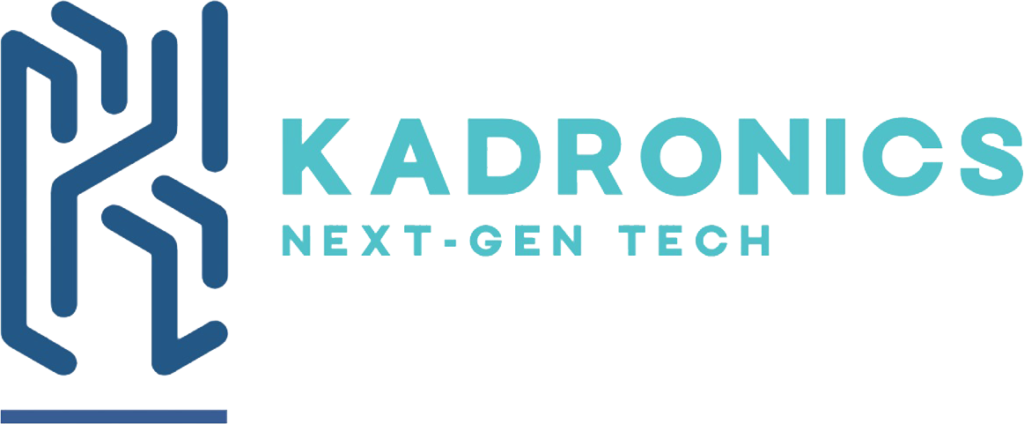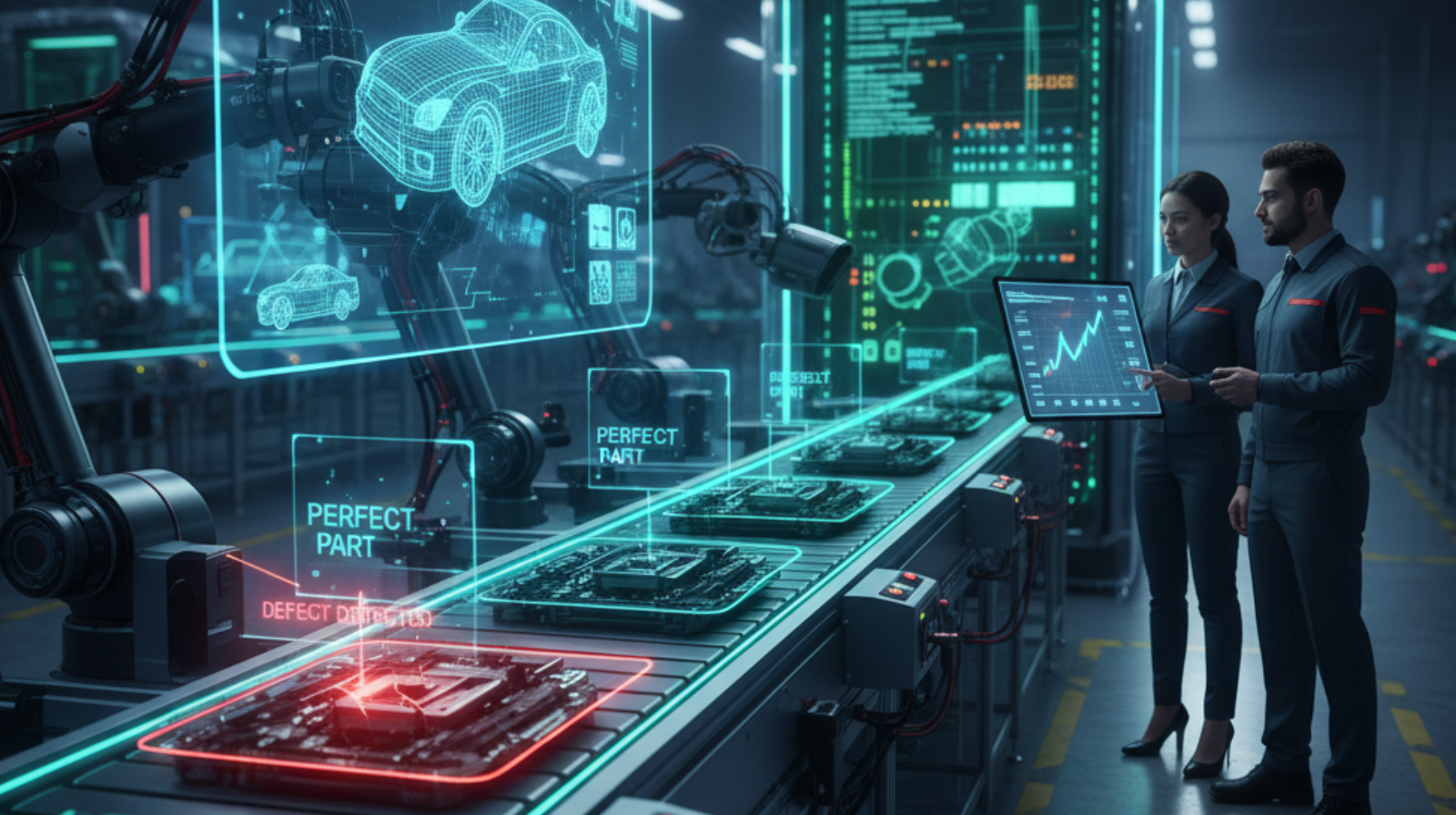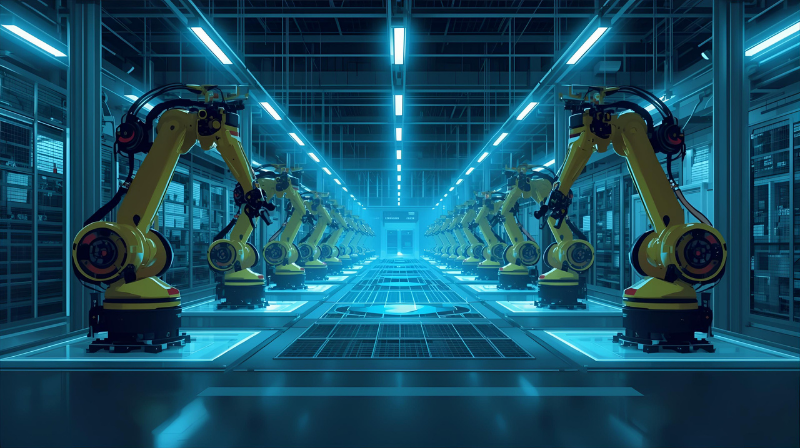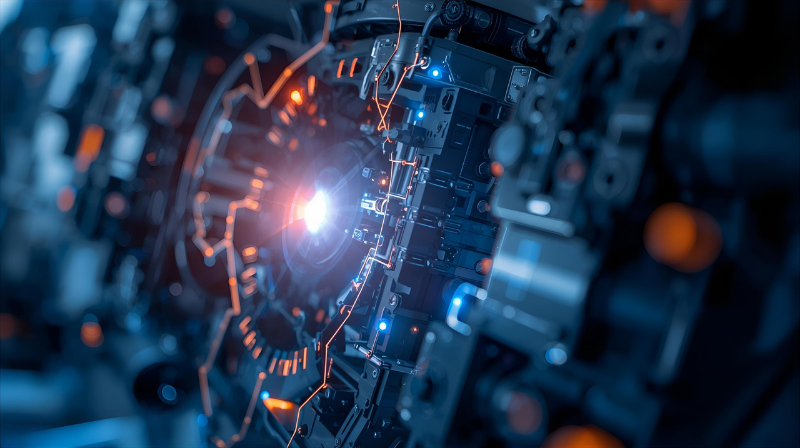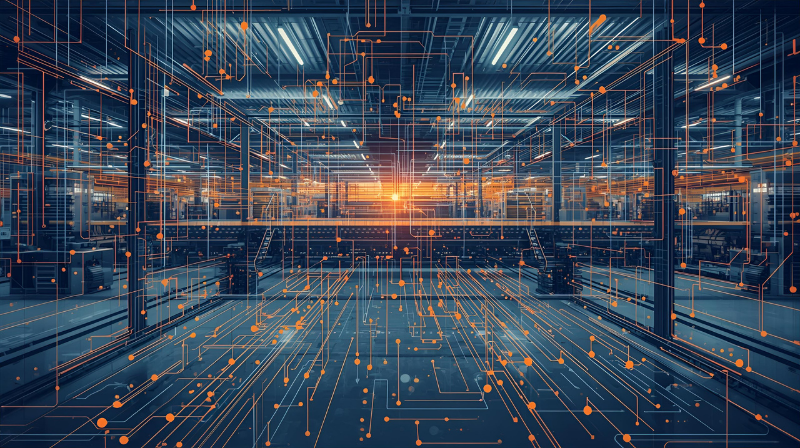For decades, the final line of defense in manufacturing quality control has been the human eye. Perched at the end of a fast-moving assembly line, a dedicated inspector would watch thousands of identical parts whiz by, tasked with the Herculean effort of spotting the one tiny flaw—the microscopic scratch, the subtle color mismatch, the hairline crack—that separates a perfect product from a future customer complaint. It’s a job that demands superhuman focus, a job that’s frankly, not fit for humans.
We get tired. Our eyes play tricks on us. The sheer monotony of staring at perfection makes spotting imperfection nearly impossible over an eight-hour shift. But what if you could have a quality inspector with hawk-like vision, a supercomputer’s brain, and the stamina of a machine that never sleeps? That’s not science fiction; it’s the reality of AI-powered manufacturing inspection, and it’s ushering in a new era of quality control.
The Flaw in the Human Factor
Relying solely on human inspection in modern, high-speed manufacturing is like using a fishing net to catch grains of sand. It’s a fundamentally mismatched tool for the job. The limitations are clear:
- Inconsistency: An inspector’s performance at 9 AM is not the same as it is at 4 PM. Fatigue, distractions, and simple human error lead to inconsistent results.
- Speed: Production lines now move at speeds that defy the limits of human perception. Asking someone to reliably inspect multiple parts per second is an invitation for defects to slip through.
- Complexity: As products become more intricate, so do their potential flaws. Microscopic defects on a complex circuit board or subtle internal anomalies in a casting are often completely invisible to the naked eye.
These aren’t criticisms of human workers; they are simply the realities of human biology. The system is flawed, and it’s time for an upgrade.
How to Teach a Machine to Be a Perfectionist
AI visual inspection is a quantum leap beyond old-school machine vision, which was often just a glorified digital checklist. A traditional system might check if a screw is present or absent. An AI, however, can be trained to understand context. It learns the visual essence of a “perfect” product and can then identify any deviation from that ideal, even flaws it has never seen before.
The process is remarkably intuitive. You feed the AI model thousands of images of your product, showing it what “good” looks like from every conceivable angle. You also show it examples of known defects. The neural network then learns, much like a human, to recognize patterns. It gets smarter over time, refining its understanding with every part it inspects.
This leads to some transformative benefits:
- Superhuman Precision: An AI can detect pixel-level deviations, identifying microscopic scratches, textural anomalies, or color variations that are completely imperceptible to a person.
- Unwavering Stamina: The AI inspector on the last hour of a double shift is just as sharp as it was in the first minute. It analyzes every single product with the same relentless, unbiased scrutiny.
- From Detection to Prediction: This is where AI changes the game. It doesn’t just find defects; it generates a torrent of data about them. By analyzing the types and frequency of flaws, AI can identify trends that point to a problem upstream. As a recent report from McKinsey highlights, this allows manufacturers to shift from reactive defect detection to predictive quality management, potentially reducing quality-control costs by up to 50%. The system can flag a machine that’s starting to drift out of calibration before it produces a thousand faulty parts.
Putting the All-Seeing Eye to Work
Implementing this technology is no longer a futuristic dream. It’s a practical, high-ROI step towards a smarter factory. Our AI Manufacturing Inspection and Defect Analysis solution is designed to integrate into existing production lines, providing a powerful layer of intelligent quality assurance. By leveraging custom-built products and expert R&D services, we can develop a system trained specifically on the unique features and potential flaws of your products.
This isn’t about replacing your workforce. It’s about empowering them. By automating the tedious, repetitive, and frankly impossible task of manual inspection, you free up your skilled team members to focus on what humans do best: solving complex problems, improving processes, and driving innovation. You’re not just catching more defects; you’re building a smarter, more efficient, and more proactive manufacturing ecosystem.
